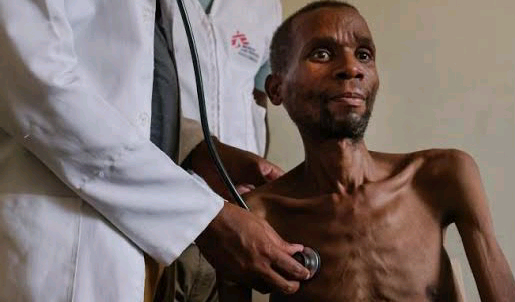By Our Reporter
Uganda recorded approximately 38,000 new HIV infections in 2023, with a significant portion of cases concentrated among youth aged 15 to 24, according to data from the Uganda AIDS Commission (UAC). Health officials warn that the continuing spread of the virus—particularly among vulnerable populations—poses a serious threat to the country’s development and public health targets.
Dr. Nelson Musoba, Director-General of the UAC, expressed alarm over the steady rate of new infections despite years of public health campaigns and interventions.
“We shouldn’t be seeing new infections given the information we have and the interventions in place,” Dr. Musoba said. “However, we are facing the challenge of reaching all segments of the population with vital health messages.”
The most affected demographics include sex workers, men who have sex with men, truck drivers, and residents of fishing communities—groups considered at higher risk due to their occupational and social environments. Particularly troubling is the number of new infections among young girls, with Dr. Musoba revealing that four out of every five new infections in the 15–24 age group are girls.
“This demographic represents a serious threat to our future workforce,” he added, highlighting the implications for Uganda’s broader development goals of industrialization and modernization.
Progress Made, But Far From National Goals
Despite the high number of new infections, the Uganda AIDS Commission also noted a slow but steady decline in overall HIV incidence. Dr. Vincent Bagambe, UAC’s Director of Planning and Strategic Information, said the reduction was based on data from health facilities and national surveys, including the Uganda Demographic and Health Survey.
“Yes, we are happy we have made reductions, but we still have a lot to do to achieve our targets and work towards our goal of ending AIDS as a public health threat,” Dr. Bagambe said during a media briefing earlier this month.
Uganda had set an ambitious national target to reduce new HIV infections to 10,000 annually, but the current figure of 38,000 indicates a major gap. AIDS-related deaths also remain high, with more than 20,000 lives lost in 2023—double the national target of under 10,000 deaths annually.
The national prevalence rate stands at 5.1%, down significantly from the 18% recorded in the 1980s. An estimated 1.5 million people in Uganda currently live with HIV, while 98% of the population is HIV-negative.
Funding Challenges & Recovery
Uganda’s efforts to combat HIV/AIDS have faced recent setbacks, particularly due to a U.S. executive order that temporarily froze USAID funding. The freeze led to the loss of 20,000 to 25,000 jobs at partner-run HIV clinics. A waiver has since allowed some operations to resume and key personnel to return to their roles.
Despite these financial constraints, the Ugandan government has committed 320 billion shillings annually toward HIV-related services. All government agencies are now required to allocate 0.1% of their annual budgets to HIV and AIDS interventions, ensuring decentralised support for prevention and treatment at local levels.
Both Dr. Bagambe and Dr. Musoba emphasized the need for a whole-of-society approach to ending HIV/AIDS in Uganda. They called on government institutions, civil society, the media, parents, and young people to take ownership of the fight against the virus.
This aligns with global efforts led by UNAIDS and the World Health Organization, which aim to end AIDS as a public health threat by 2030 under the Sustainable Development Goals (SDGs). The international target is a 90% reduction in both new infections and AIDS-related deaths compared to 2010 levels.
Dr. Ruth Ssenyonyi, Chairperson of the Uganda AIDS Commission, reflected on the country’s decades-long fight against HIV, noting significant progress.
“We’ve come from a time when HIV prevalence was as high as 18%. Today, 98% of Ugandans are HIV-negative. That is a testament to the efforts we’ve made, but also a reminder that the work is far from over,” she said.
As Uganda looks ahead, health officials stress that reducing new infections—especially among young people and key populations—remains essential to achieving a future free of HIV.

